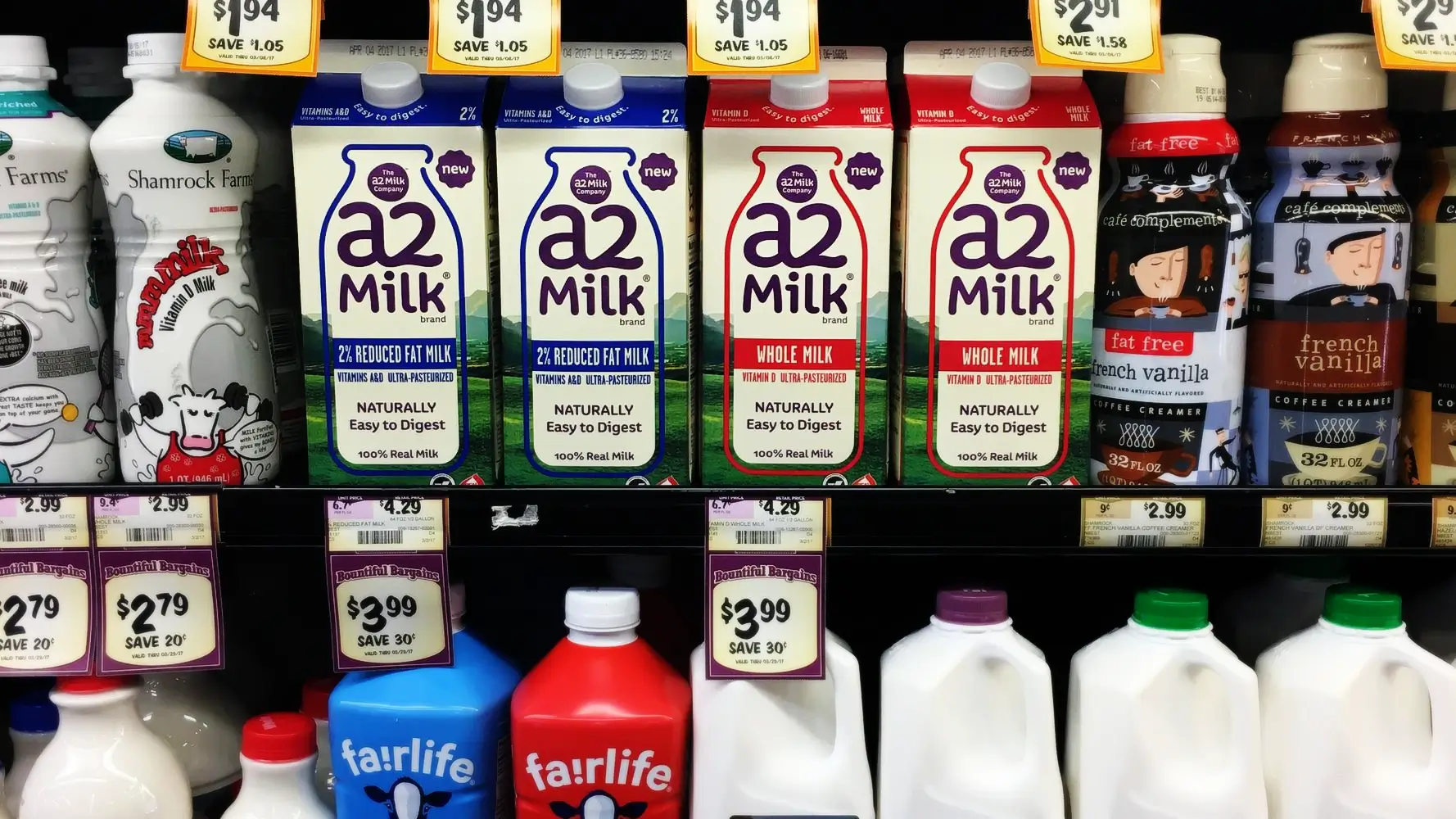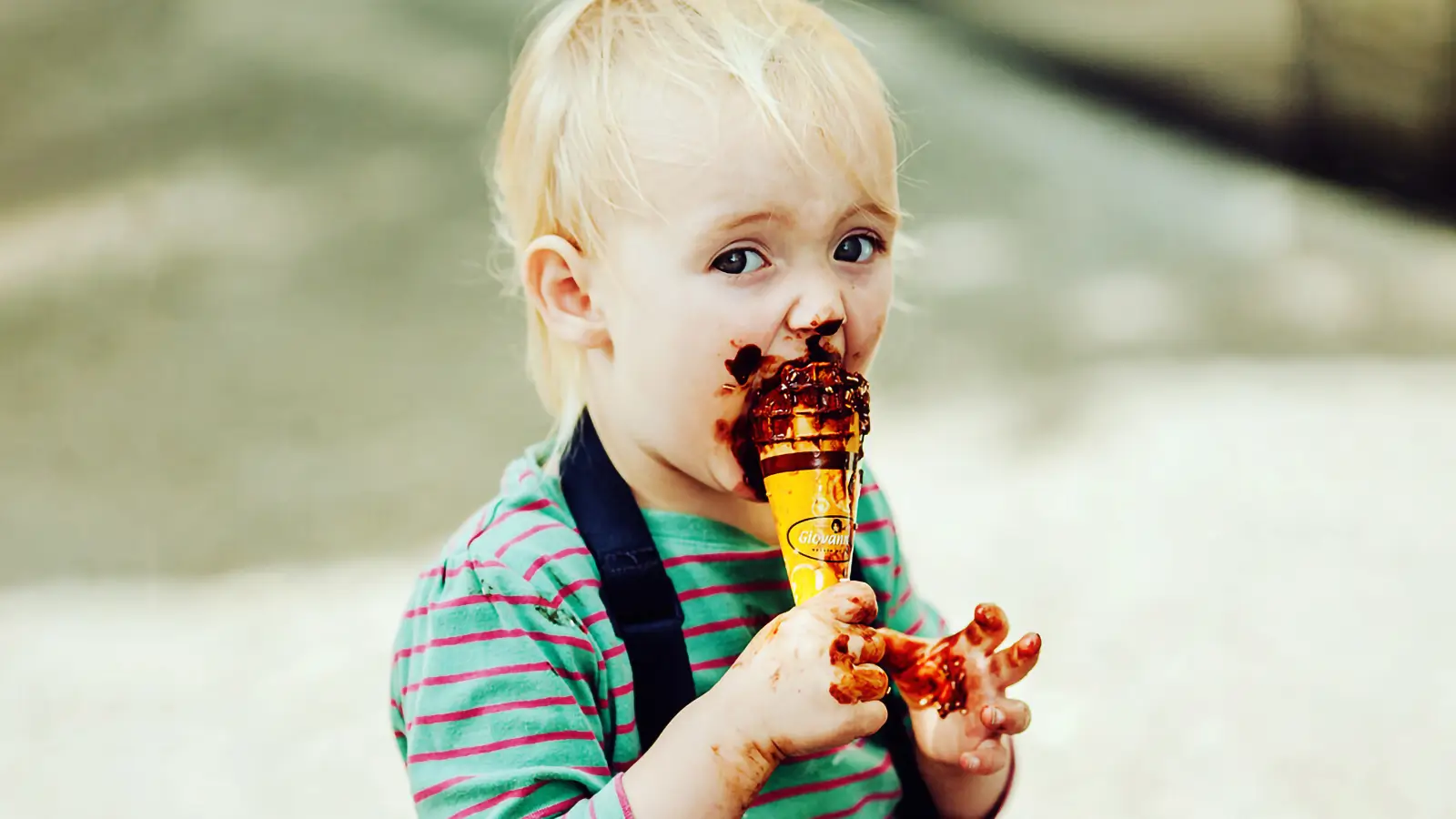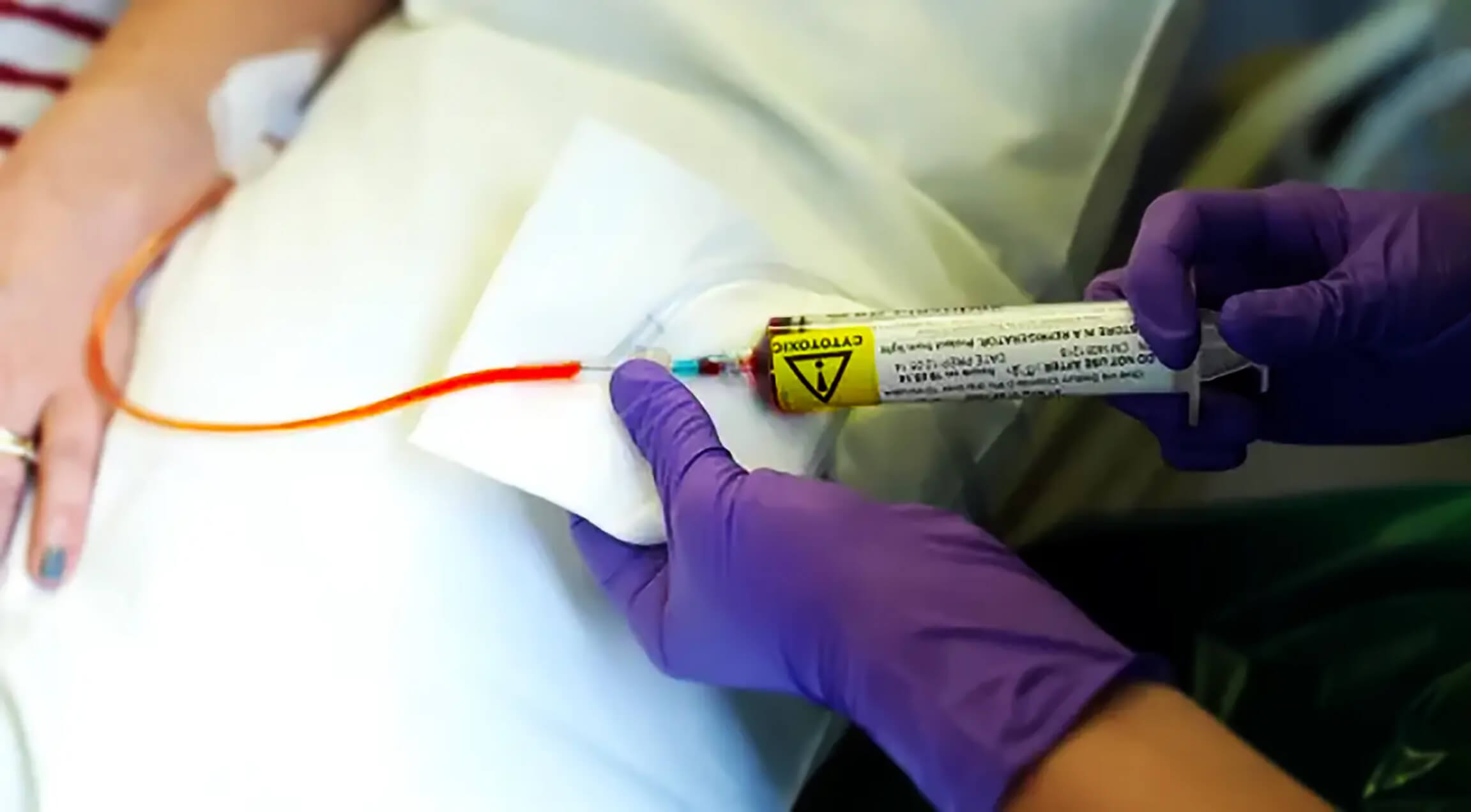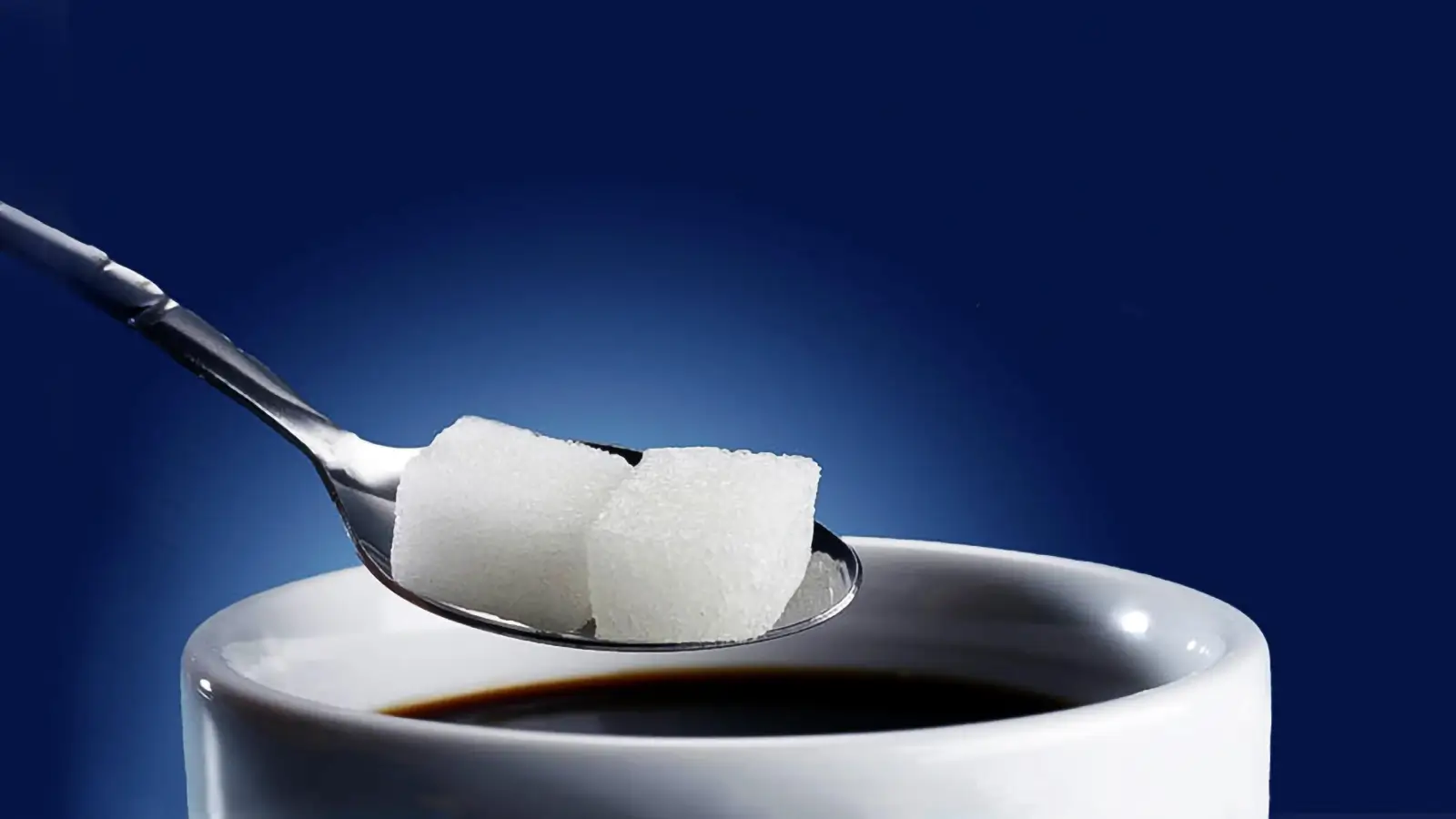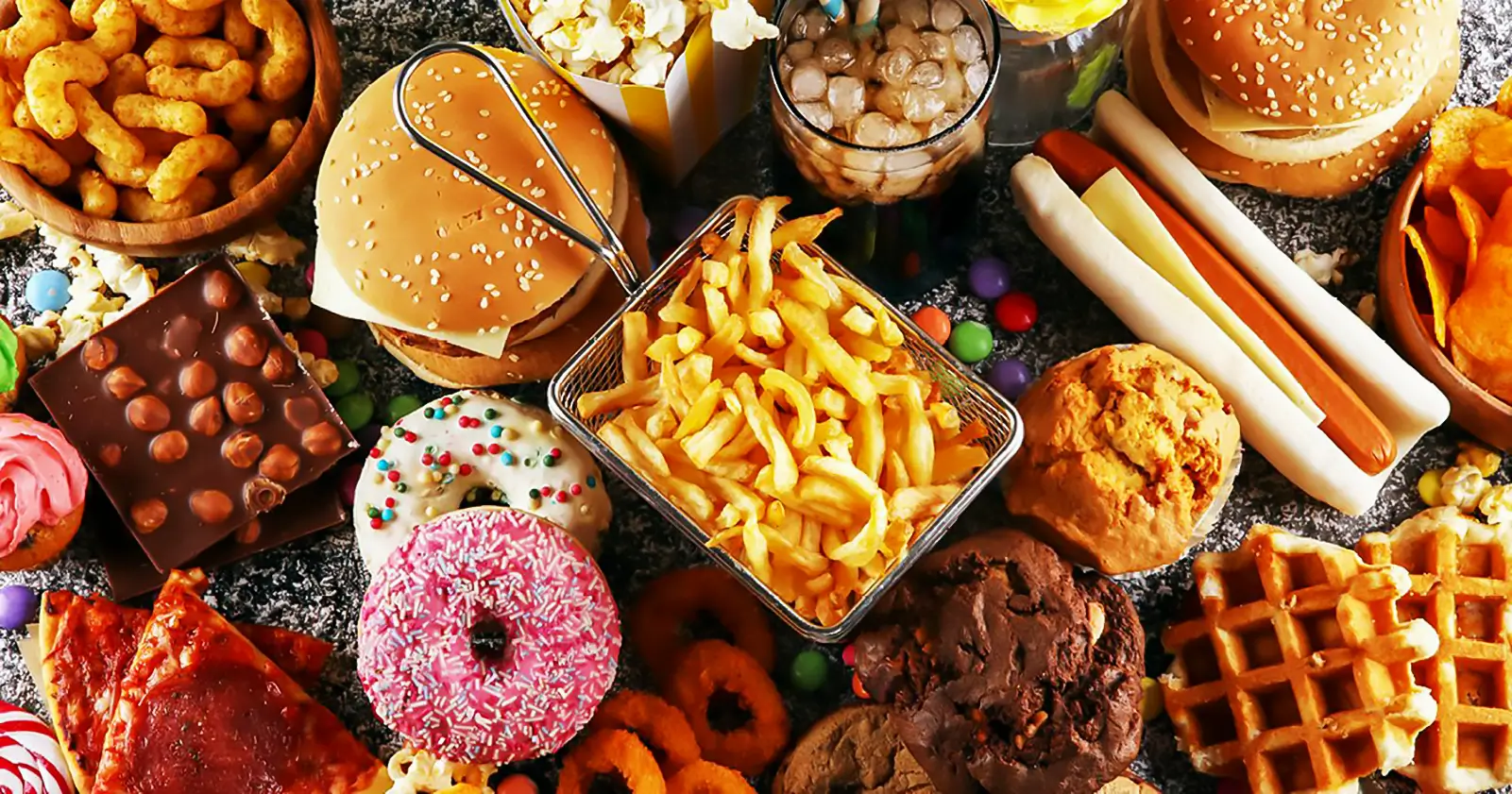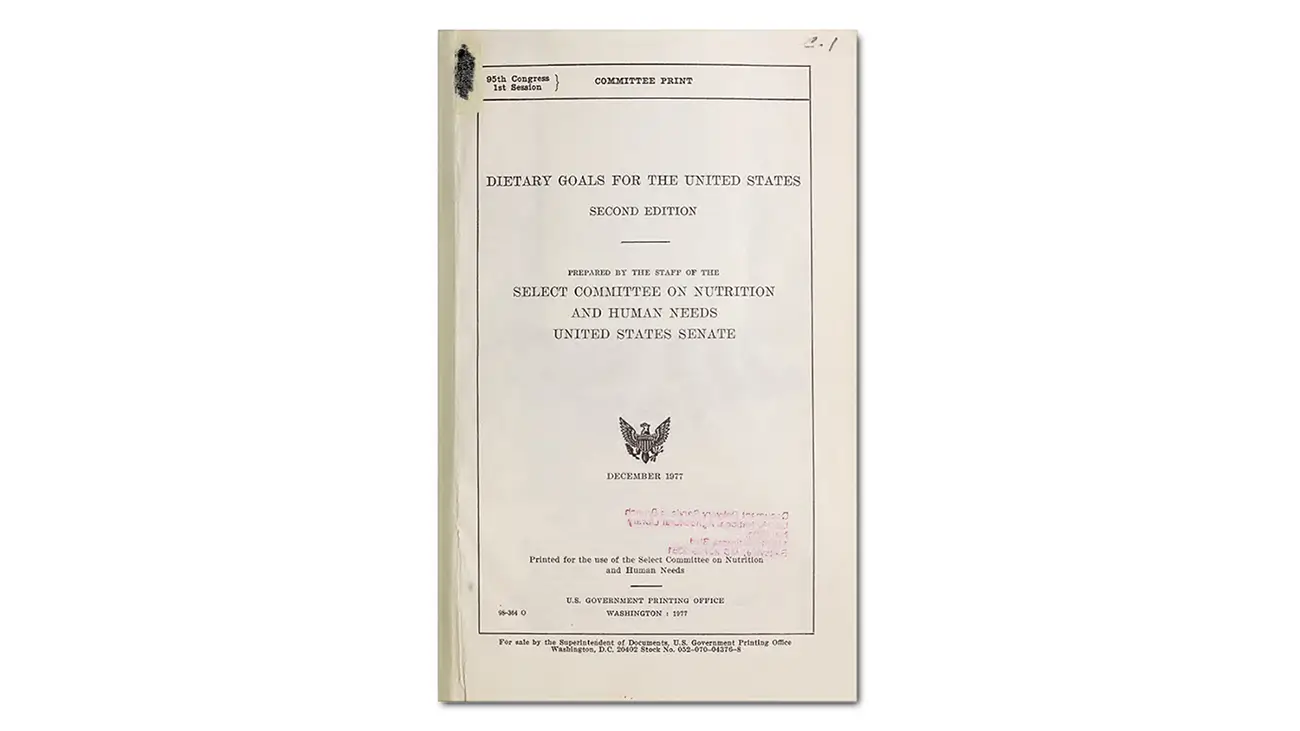One chemical made industry so happy. It is chemical that does all the things that excitotoxins do but unlike MSG is sweet to the taste. It is chemical known as aspartame (Nutra Sweet).
Milos Pokimica
Written By: Milos Pokimica
Medically Reviewed by: Dr. Xiùying Wáng, M.D.
Updated September 30, 2023When the industry removes fat from the product, it has to add something to make that product tasty again. What they do if they remove fat is that there is nothing in the product so the solution is to add something back to increase the taste, usually sugar. If the product is not sweet, then sugar is no option. Then what they do is they will add MSG and salt. The response in the brain from excitotoxins will compensate for missing sugar. However, then the problem arises.
What will you add back if a product needs to be sweet?
What if the product needs to be without added calories or just without added sugar but still sweet? In that case, they can add other artificial sweeteners, but that will not trigger the brain in the same manner as sugar will so they have a problem. Adding regular artificial sweeteners will lead to unsatisfying results for various reasons I already disguised here (Artificial sweeteners- Understanding the basics). They need something to truly activate dopamine signaling in the brain as sugar does so the taste is just half of the equation.
The problem that sweet-tasting excitotoxin will solve.

Think of aspartame as a sweet MSG substitute. In cases when they need to have both sugar and fat removed they can add excitotoxins to have the desired effect. That is why MSG soup is tasty without any calories. That is why diet Coke is tasty without any calories. They will add stimulants to it like caffeine and excitotoxins like aspartame that have a sweet taste and will stimulate the brain at the same time, so the response from the brain will be like you have eaten something that actually contains sugar. Drinking diet sodas can be addictive because of this simulative effect.
When we use a stimulant, we become excited. By reacting with our dopamine system, the stimulant provides us with pleasure and euphoria which motivates us to consume the same stimulant again in order to experience a repeated feeling of reward (a process identified as positive re-enforcement).

Another side of this, known as negative re-enforcement, is the sudden discontinuation of addictive stimulants that can result in cravings, which is essentially the feeling of wanting to avoid the discomfort that develops once the artificial high of the stimulant has gone.

Within both of these processes, we are left wanting more. In fact, the memory for cocaine addiction resides within the glutamate receptor (Mao et al., 2013). In response to drug exposure, these receptors in neurons show marked and dynamic changes in expression. Emerging evidence ties them to the remodeling of excitatory synapses and persistent drug seeking. The high level of expression of mGluR7 glutamate receptors in the limbic reward circuitry implies its role in drug addiction. In fact, evidence associates this receptor with the addictive effects of psychostimulants, alcohol, and opiates. It is glutamate as same as glutamate in MSG.
In response to operant administration of common addictive drugs, such as psychostimulants (cocaine and amphetamine), alcohol, and opiates, limbic group III mGluRs undergo drastic adaptations to contribute to the enduring remodeling of excitatory synapses and usually suppress drug-seeking behavior. As a result, a loss-of-function mutation (knockout) of individual group III receptor subtypes often promotes drug seeking (Mao et al., 2013).

This is exactly why aspartame, a chemical with very unique properties, is used even if it is one of the most toxic and neurotoxic chemical around. It is very unique in its form which is both sweet and has excitotoxicity characteristics at the same time so for time being it is unreplaceable. The side effects down the line that this chemical can have on our health are impossible to legally correlate to companies that use it. It has a dopamine-inducing effect on the brain and combined with caffeine that has the same effect can successfully trigger addicting behavior, especially in children. That is why coke zero used it for example and not something healthier like erythritol. All companies today know about this and they will do whatever it takes to keep aspartame around knowing very well that you or let’s say most of the population, 99% never ever read labels nonetheless read articles like this one. And this includes pregnant women, children, people with cancer, and so on. Even the history of the substance is so telling to understand what is, in reality, going on behind the marketing and propaganda.
Back in 1965 while working on an ulcer drug, James Schlatter, a chemist at G.D. Searle (a subsidiary of Pfizer), accidentally discovered aspartame, a substance that is 180 times sweeter than sugar yet has no calories. He was recrystallizing aspartame from ethanol. The compound spilled on the outside of the flask, and some of it stuck to his fingers. He forgot about it and licked his fingers to pick up a piece of paper and noticed an overpowering sweet taste.
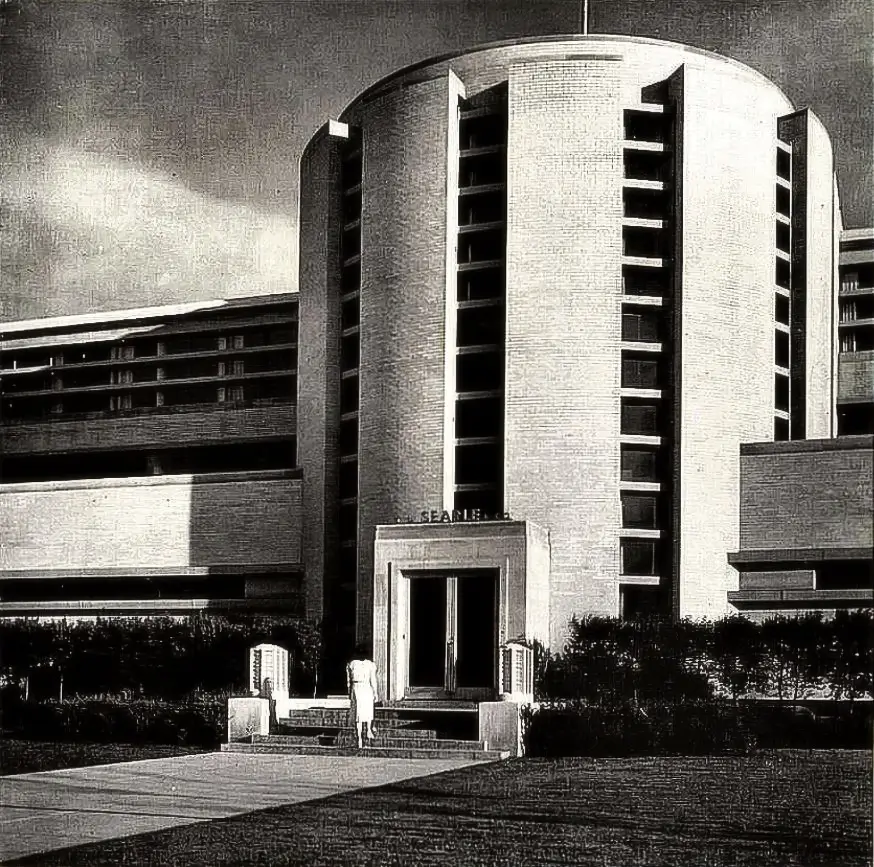
In 1967 Searle begins the safety tests on aspartame that are necessary for applying for FDA approval of food additives. Seven infant monkeys were administered aspartame mixed in milk. One died after 300 days. Five others (out of seven total) had grand mal seizures. The results were withheld from the FDA when G.D. Searle submitted its initial applications. Why did they mix aspartame with milk? Because milk will slow down its digestion to some extent in the hope that it would not overwhelm the brain in a short time and cause damage. The bigger problem was that tried to hide the results. A couple of years later Searle Company executives had created the internal policy memo in which they were describing different psychological tactics the company should use to bring the FDA into a “subconscious spirit of participation” with them on aspartame and get FDA regulators into the “habit of saying, Yes.” By that time there were more not industry-funded studies.
Neuroscientist Dr. John Olney (that pioneering research with monosodium glutamate was responsible for having it removed from baby foods) did a couple of them and by that time already informed the Searle Company that his studies showed that aspartic acid (one of the ingredients of aspartame) is causing holes in the brains of infant mice. But by 1973 after spending tens of millions of dollars conducting safety tests, Searle Company applied for FDA approval and submitted 11 pivotal studies, and did 113 studies in support of aspartame’s safety in following years. One year later the FDA grants aspartame its first approval for restricted use in dry foods.
The same year two men Jim Turner and Dr. John Olney filed the first objections against aspartame’s approval. Two years later their petition triggered an FDA investigation of the laboratory practices of aspartame’s manufacturer, G.D. Searle. The investigation found that Searle’s testing procedures were unscientific, full of errors, and “manipulated” data. The researchers report they “had never seen anything as bad as Searle’s testing.” G.D. Searle company in the crusade to get approval conducted a line of studies on animals. When they submitted this to the FDA, there was some question about the studies.
One way they tried to manipulate the data was that they showed in the studies that there are no significantly more tumors in the test group than in the control group. When some of the neuroscientists that work for the FDA looked at the data, they saw that this is correct, but then there were other problems. Both groups had significantly higher tumor rates than the normal average, especially for brain tumors. This can happen when someone tries to manipulate data and represent some of the control rats with tumors as a part of the control group. This will lower the tumor rate in a test group, it will rise it in the control group, and at the end, they can say that it does not cause any tumor or what so ever but then both the control group and the test group will have significantly higher tumor rates than the normal average.
So they requested research to be done by the Bureau of foods which was the precursor to the FDA. Dr. Jerome Bressler was in charge of the group that looked through the research that had been done by Searle. In his report, he stated that there were misinterpretations of the data and that it was the world’s worst research. The record notices that 98 of the 196 animals died during one of Searle’s studies and weren’t autopsied until later dates. Numerous errors and discrepancies are noted. For instance, a rat was recorded alive, then dead, then alive, then dead again. They found that some of the animals that died after aspartame Searle scientists did not autopsy until a full year later. After that period the flesh was petrified, and there was no possible way to do an autopsy. However, they represented that they had done autopsies and that animals are normal. They were cutting tumors out and saying that animals are healthy. They had animal tissue that had obvious tumors in it that were reported normal. Testicular atrophy was not noted. There where an effort to cover up the negative effects to get approval. If they did normal science aspartame would not be approved.
The FDA formally requested the U.S. Attorney’s office to begin grand jury procedures to review whether charges should be filed against Searle for deliberately misleading conclusions and “concealing material facts and making false statements” in aspartame safety tests.
That was the first time in the FDA’s history that they asked for a criminal investigation of a manufacturer.
While the grand jury inquiry is undertaken, Sidley & Austin, the law firm representing Searle, had begun the job of negotiations with the U.S. Attorney in charge of the investigation, Samuel Skinner. Samuel Skinner will leave the U.S. Attorney’s office later that year and will take a job with Searle’s law firm Sidley and Ostin. At the same time, G. D. Searle is going to hire the prominent Washington insider Donald Rumsfeld as the new CEO. A former Member of Congress and Secretary of Defense in the Ford Administration. Yes, that Donald Rumsfeld. Rumsfeld was appointed Secretary of Defense for a second time in January 2001 by President George W. Bush.

The medal that Rumsfeld received in 2004 was the Presidential Medal of Freedom. “Freedom” proposes the right to use your influential associates in Washington to support your company’s hazardous substance for human consumption and make a fat bonus on the way out the door. It also means you can drop bombs on other countries. It also means you can bribe the U.S. Attorney in charge of the investigation.
After U.S. Attorney Skinner’s withdrawal and resignation, there were significant stalls in the Searle grand jury investigation for so long that the statute of limitations on the aspartame charges had run out.
Assistant US attorney William Conlon who was assigned to the grand jury investigation let the statute of limitations run out. He was hired fifteen months later by the same Searl law firm Sidley & Austin.
The grand jury investigation was dropped.
Two years later in 1979, the FDA established a Public Board of Inquiry to rule on safety issues surrounding NutraSweet. The Public Board of Inquiry’s conclusion was that aspartame should not be approved until further research is done. The board stated that:
“It has not been presented with proof of reasonable certainty that aspartame is safe for use as a food additive.”
By 1980 the FDA outlaws aspartame from use after having three autonomous scientific studies of the sweetener.
When someone wants to say that all of this is just conspiracy, remind him that FDA already outlawed the substance even with all of the lobbying behind it. That will say a lot about the toxicity of aspartame. It was concluded that one primary health effects were that it had a high chance of inducing brain tumors. We also need to keep in mind that back in that time there was no requirement for the FDA to examine the effects on the brain from food additives. There were never any studies done to examine the effect of aspartame on long-term or even short-term neurological effects. Cancer studies turned into brain tumors, but that is cancer studies, not brain studies. Cancer studies were the primary and the only ones that they ever investigated. Despite all of this at this it was clear that aspartame was not fit to be used in foods and banned stayed in place, but not for long.
In 1981 Ronald Reagan was sworn in as President of the United States. His transition team included Donald Rumsfeld, CEO of G. D. Searle. Rumsfeld appointed Dr. Arthur Hull Hayes Jr. to be the new FDA Commissioner. Even before that the first thing that Ronald Reagan did when he was sworn in as president was to suspend the authority of the FDA commissioner to take any actions.
The first thing that Regan did, not the second or third, but the first thing was to push for approval for this chemical. There was obviously a fear that Commissioner was going to do something about aspartame before he leaves office. That will make things more difficult for them so Regan suspended the authority of the FDA commissioner until they can elect a new one in a month or so.
In that month the old FDA commissioner was prevented from taking any actions. It did not take long for the new FDA Commissioner handpicked by Donald Rumsfeld, CEO of G. D. Searle to approve the chemical substance that is made by G. D. Searle.
The new FDA commissioner selected a 5-person Scientific Commission to evaluate the board of inquiry’s decision. It took just a couple of weeks when presented with all of the toxic effects of the substance for the panel to decide 3-2 in favor of supporting the ban of aspartame.
Hull then resolved to a different tactic. He appointed a 6th member to the board, which created a tie in the voting, 3-3. Then Hull himself decided to break the tie and approve aspartame for use personally. Hull later left the FDA under several allegations, served briefly at New York Medical College as a cover, and then took a position as a consultant (1000$ per day) basically to do nothing with Burston-Marsteller. Burston-Marsteller is the main public relations firm for both Monsanto and GD Searle. Since that time he disappeared and has never spoken publicly about aspartame. Seven of the key people that made decisions in this entire process that made aspartame go through the entire process ended up living and getting a new jobs for some of the Nutra Sweet using industries. In 1985, Monsanto decided to purchase the aspartame patent from G.D. Searle.
Also beginning in the middle 1980s, the FDA dissuaded and actually prevented the National Toxicology Program from doing any long-term cancer research on aspartame. What was left is hundreds of industry-founded studies that showed nothing, a 100% safe rate, and over 90 independently done studies more than 90% of them showed increased cancer risk and many other adverse effects. Scientific studies have been carried out with conclusions ranging from “safe under all conditions” to “unsafe at any dose.”
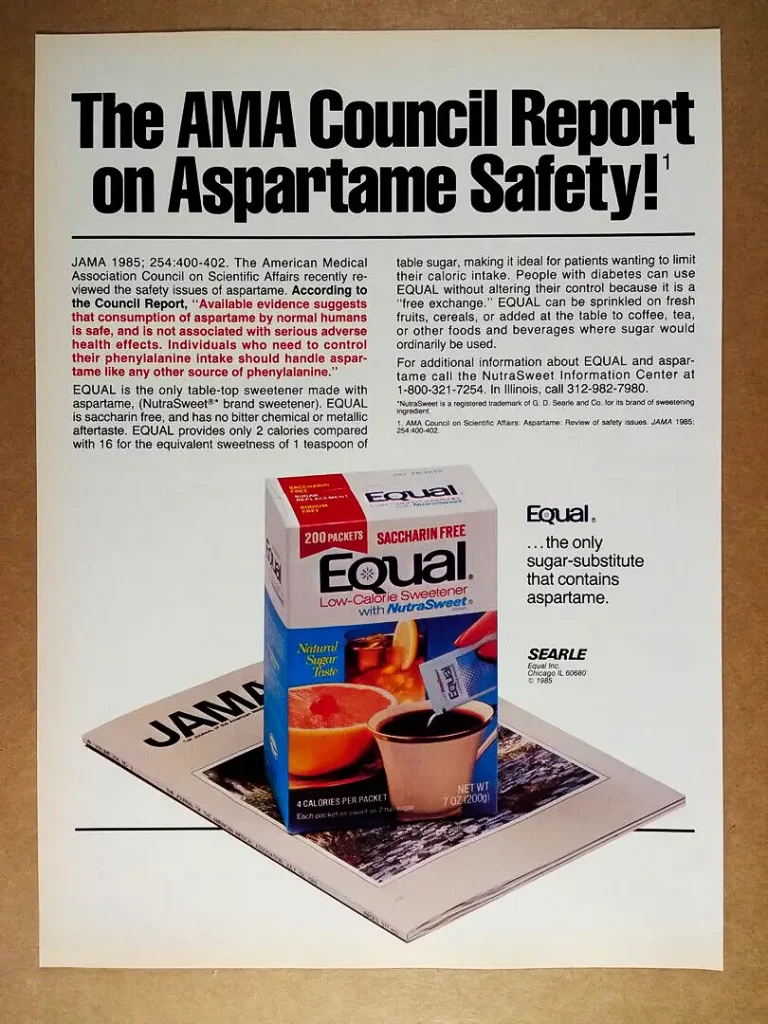
There is a well-documented increase in incident rates of brain tumors in the year 1985 that remained elevated to this day. National Cancer Institute recorded an impressive increase in the primary brain cancer rate since 1985. At that time this trend was singularly attributed to more innovative scanning and diagnostic procedures. The problem is that adequate brain scanning devices were widely available for at least ten years prior to 1985. Also, incidents of other forms of cancers outside of the brain remained the same and in some cases declined. Aspartame was fully marketed by 1983. Already by 1984, there were a 10% increase in brain cancer rate in the U.S. and the incidence of brain lymphoma, a type of aggressive brain tumor jumped by 60%.
In the gut, aspartame is broken down to release methanol and two amino acids phenylalanine, and aspartate. About 50% of it is aspartic acid, 40% of it is phenylalanine, and 10% of it is wood alcohol or methanol.
Methanol is further metabolized into formaldehyde.
You might know formaldehyde as an embalming fluid. The body cannot get rid of formaldehyde. Any amount of it the body stores. The industry has made a big deal about how there is a methyl group that is found in all fruits and vegetables. Anything that we eat has methyl groups so eating methanol in aspartame is no big deal and concentrations of formaldehyde in comparison are minuscule. The amount of formaldehyde we eat from fruit is much more than the amount we could get from aspartame. You will hear this with any doctor or research that is designed to defend the use of aspartame. But again they don’t tell the whole truth.
When the body metabolizes aspartame, you end up with a small amount of formaldehyde, but that formaldehyde is in free form.
When you eat fruit, you take more methanol, but that methanol is bound to pectin. Humans lack the enzyme to break down pectin. We are unable to split methanol from pectin. It goes through the body without doing any damage whatsoever. Even if there is more methanol in fruit and vegetables in reality that methanol is irrelevant. In aspartame, the free methanol and then free formaldehyde even in minute amounts are dangerous because of the accumulative toxic effect of it. Besides methanol, in nature, we are eating the same amount of ethanol in fruit or vegetables. There are methanol and ethanol in fruits, and they counteract each other.
When G. D. Searle did an experiment with monkeys, aspartame give those monkeys grand mal seizures. Monkeys have a higher reaction to ethanol than humans. Regular alcohol like wine. On the other hand, they have really high resistance to methanol. Much higher than humans. Even with high resistance, and even though they were fed aspartame with milk, they still had seizures, and one died from cardiac arrest caused by overstimulation of the nervous system.
Besides methanol aspartic acid is an excitotoxin and phenylalanine had been shown to cross the blood-brain barrier, and it is a precursor of norepinephrine (adrenalin in the brain).
Phenylalanine occurs naturally in the brain. It is not that bad but if we have an unnaturally high level it can be very bad. There is a medical disorder that affects 1 in 10,000 people known as PKU (Phenylketonuria). It is an overabundance of Phenylalanine in the brain because of the body’s inability to process it. If you add phenylalanine to someone that does not have PKU you can trigger a very bad response. Excess amounts of phenylalanine are linked to a reduction in serotonin production. Phenylalanine can trigger for example manic attacks in people who are suffering from manic depression.
It is being known for a long time, and there are also studies that when you take aspartame with carbohydrates, you will decrease the availability of l-tryptophan in the brain which is a building block for serotonin. It can also trigger regular depletion in susceptible individuals. In one study (Walton et al., 1993) they even had to stop the experiment. Although the protocol required the recruitment of 40 patients with unipolar depression and 40 without any psychiatric history, the project was halted by the Institutional Review Board after a total of 13 individuals had completed the study because of the severity of the reactions in a group of subjects with a history of depression. It was concluded that it was unethical to continue the study. In this case also the Nutra Sweet company refused to provide the product for testing and even refused to sell it to them. Researchers had to find it in the third-party vendors.
In one of the new studies on the effect of aspartame on mood disorders done back in 2014 (Lindseth et al., 2014) they took regular healthy people and put them on a high aspartame diet. Healthy adults who consumed a study-prepared high-aspartame diet (25 mg/kg body weight/day) for 8 days and a low-aspartame diet (10 mg/kg body weight/day) for 8 days, with a 2-week washout between the diets, were examined for within-subject differences in cognition, depression, mood, and headache. When consuming high-aspartame diets, participants had a more irritable mood, exhibited more depression, and performed worse on spatial orientation tests. These were all healthy people with no history of mental illness.
Now, how much high a dose of 25 mg/kg body weight/day in actuality is? Well FDA put the safe upper limit at 50 mg/kg body weight/day. The high consumption level examined here was well under the maximum acceptable daily intake level of 40-50 mg. And this is just eight days.

Consuming this stuff for a prolonged period can have even more severe effects. Especially in children and pregnant women. Problem is that today aspartame and other excitotoxins are added everywhere. There is no real possibility that anyone who eats anything made by the food industry would be able to avoid eating them. And these chemicals are just the tip of the iceberg.
References:
- Rycerz, K., & Jaworska-Adamu, J. E. (2013). Effects of aspartame metabolites on astrocytes and neurons. Folia neuropathologica, 51(1), 10–17. https://doi.org/10.5114/fn.2013.34191
- Humphries, P., Pretorius, E., & Naudé, H. (2008). Direct and indirect cellular effects of aspartame on the brain. European journal of clinical nutrition, 62(4), 451–462. https://doi.org/10.1038/sj.ejcn.1602866
- Ashok, I., Sheeladevi, R., & Wankhar, D. (2015). Acute effect of aspartame-induced oxidative stress in Wistar albino rat brain. Journal of biomedical research, 29(5), 390–396. https://doi.org/10.7555/JBR.28.20120118
- Onaolapo, A. Y., Abdusalam, S. Z., & Onaolapo, O. J. (2017). Silymarin attenuates aspartame-induced variation in mouse behaviour, cerebrocortical morphology and oxidative stress markers. Pathophysiology : the official journal of the International Society for Pathophysiology, 24(2), 51–62. https://doi.org/10.1016/j.pathophys.2017.01.002
- Choudhary A. K. (2018). Aspartame: Should Individuals with Type II Diabetes be Taking it?. Current diabetes reviews, 14(4), 350–362. https://doi.org/10.2174/1573399813666170601093336
- Choudhary, A. K., & Lee, Y. Y. (2018). Neurophysiological symptoms and aspartame: What is the connection?. Nutritional neuroscience, 21(5), 306–316. https://doi.org/10.1080/1028415X.2017.1288340
- González-Quevedo, A., Obregón, F., Urbina, M., Roussó, T., & Lima, L. (2002). Effect of chronic methanol administration on amino acids and monoamines in retina, optic nerve, and brain of the rat. Toxicology and applied pharmacology, 185(2), 77–84. https://doi.org/10.1006/taap.2002.9477
- Lindseth, G. N., Coolahan, S. E., Petros, T. V., & Lindseth, P. D. (2014). Neurobehavioral effects of aspartame consumption. Research in nursing & health, 37(3), 185–193. https://doi.org/10.1002/nur.21595
- Guo, X., Park, Y., Freedman, N. D., Sinha, R., Hollenbeck, A. R., Blair, A., & Chen, H. (2014). Sweetened beverages, coffee, and tea and depression risk among older US adults. PloS one, 9(4), e94715. https://doi.org/10.1371/journal.pone.0094715
- Onaolapo, A. Y., Onaolapo, O. J., & Nwoha, P. U. (2016). Alterations in behaviour, cerebral cortical morphology and cerebral oxidative stress markers following aspartame ingestion. Journal of chemical neuroanatomy, 78, 42–56. https://doi.org/10.1016/j.jchemneu.2016.08.006
- Olney, J. W., Farber, N. B., Spitznagel, E., & Robins, L. N. (1996). Increasing brain tumor rates: is there a link to aspartame?. Journal of neuropathology and experimental neurology, 55(11), 1115–1123. https://doi.org/10.1097/00005072-199611000-00002
- Huff, J., & LaDou, J. (2007). Aspartame bioassay findings portend human cancer hazards. International journal of occupational and environmental health, 13(4), 446–448. https://doi.org/10.1179/oeh.2007.13.4.446
- Hall, L. N., Sanchez, L. R., Hubbard, J., Lee, H., Looby, S. E., Srinivasa, S., Zanni, M. V., Stanley, T. L., Lo, J., Grinspoon, S. K., & Fitch, K. V. (2017). Aspartame Intake Relates to Coronary Plaque Burden and Inflammatory Indices in Human Immunodeficiency Virus. Open forum infectious diseases, 4(2), ofx083. https://doi.org/10.1093/ofid/ofx083
- Palmer, J. R., Boggs, D. A., Krishnan, S., Hu, F. B., Singer, M., & Rosenberg, L. (2008). Sugar-sweetened beverages and incidence of type 2 diabetes mellitus in African American women. Archives of internal medicine, 168(14), 1487–1492. https://doi.org/10.1001/archinte.168.14.1487
- Malik, V. S., Popkin, B. M., Bray, G. A., Després, J. P., Willett, W. C., & Hu, F. B. (2010). Sugar-sweetened beverages and risk of metabolic syndrome and type 2 diabetes: a meta-analysis. Diabetes care, 33(11), 2477–2483. https://doi.org/10.2337/dc10-1079
- Finamor, I., Pérez, S., Bressan, C. A., Brenner, C. E., Rius-Pérez, S., Brittes, P. C., Cheiran, G., Rocha, M. I., da Veiga, M., Sastre, J., & Pavanato, M. A. (2017). Chronic aspartame intake causes changes in the trans-sulphuration pathway, glutathione depletion and liver damage in mice. Redox biology, 11, 701–707. https://doi.org/10.1016/j.redox.2017.01.019
- Soffritti, M., Belpoggi, F., Manservigi, M., Tibaldi, E., Lauriola, M., Falcioni, L., & Bua, L. (2010). Aspartame administered in feed, beginning prenatally through life span, induces cancers of the liver and lung in male Swiss mice. American journal of industrial medicine, 53(12), 1197–1206. https://doi.org/10.1002/ajim.20896
- Nettleton, J. E., Reimer, R. A., & Shearer, J. (2016). Reshaping the gut microbiota: Impact of low calorie sweeteners and the link to insulin resistance?. Physiology & behavior, 164(Pt B), 488–493. https://doi.org/10.1016/j.physbeh.2016.04.029
- Palmnäs, M. S., Cowan, T. E., Bomhof, M. R., Su, J., Reimer, R. A., Vogel, H. J., Hittel, D. S., & Shearer, J. (2014). Low-dose aspartame consumption differentially affects gut microbiota-host metabolic interactions in the diet-induced obese rat. PloS one, 9(10), e109841. https://doi.org/10.1371/journal.pone.0109841
- Suez, J., Korem, T., Zeevi, D., Zilberman-Schapira, G., Thaiss, C. A., Maza, O., Israeli, D., Zmora, N., Gilad, S., Weinberger, A., Kuperman, Y., Harmelin, A., Kolodkin-Gal, I., Shapiro, H., Halpern, Z., Segal, E., & Elinav, E. (2014). Artificial sweeteners induce glucose intolerance by altering the gut microbiota. Nature, 514(7521), 181–186. https://doi.org/10.1038/nature13793
- Bandyopadhyay, A., Ghoshal, S., & Mukherjee, A. (2008). Genotoxicity testing of low-calorie sweeteners: aspartame, acesulfame-K, and saccharin. Drug and chemical toxicology, 31(4), 447–457. https://doi.org/10.1080/01480540802390270
- van Eyk A. D. (2015). The effect of five artificial sweeteners on Caco-2, HT-29 and HEK-293 cells. Drug and chemical toxicology, 38(3), 318–327. https://doi.org/10.3109/01480545.2014.966381
- Brown, R. J., de Banate, M. A., & Rother, K. I. (2010). Artificial sweeteners: a systematic review of metabolic effects in youth. International journal of pediatric obesity : IJPO : an official journal of the International Association for the Study of Obesity, 5(4), 305–312. https://doi.org/10.3109/17477160903497027
- Bhupathiraju, S. N., Pan, A., Malik, V. S., Manson, J. E., Willett, W. C., van Dam, R. M., & Hu, F. B. (2013). Caffeinated and caffeine-free beverages and risk of type 2 diabetes. The American journal of clinical nutrition, 97(1), 155–166. https://doi.org/10.3945/ajcn.112.048603
- de Koning, L., Malik, V. S., Rimm, E. B., Willett, W. C., & Hu, F. B. (2011). Sugar-sweetened and artificially sweetened beverage consumption and risk of type 2 diabetes in men. The American journal of clinical nutrition, 93(6), 1321–1327. https://doi.org/10.3945/ajcn.110.007922
- Azad, M. B., Abou-Setta, A. M., Chauhan, B. F., Rabbani, R., Lys, J., Copstein, L., Mann, A., Jeyaraman, M. M., Reid, A. E., Fiander, M., MacKay, D. S., McGavock, J., Wicklow, B., & Zarychanski, R. (2017). Nonnutritive sweeteners and cardiometabolic health: a systematic review and meta-analysis of randomized controlled trials and prospective cohort studies. CMAJ : Canadian Medical Association journal = journal de l’Association medicale canadienne, 189(28), E929–E939. https://doi.org/10.1503/cmaj.161390
- Ferreira-Pêgo, C., Babio, N., Bes-Rastrollo, M., Corella, D., Estruch, R., Ros, E., Fitó, M., Serra-Majem, L., Arós, F., Fiol, M., Santos-Lozano, J. M., Muñoz-Bravo, C., Pintó, X., Ruiz-Canela, M., Salas-Salvadó, J., & PREDIMED Investigators (2016). Frequent Consumption of Sugar- and Artificially Sweetened Beverages and Natural and Bottled Fruit Juices Is Associated with an Increased Risk of Metabolic Syndrome in a Mediterranean Population at High Cardiovascular Disease Risk. The Journal of nutrition, 146(8), 1528–1536. https://doi.org/10.3945/jn.116.230367
- Pepino M. Y. (2015). Metabolic effects of non-nutritive sweeteners. Physiology & behavior, 152(Pt B), 450–455. https://doi.org/10.1016/j.physbeh.2015.06.024
- Daly, K., Darby, A. C., & Shirazi-Beechey, S. P. (2016). Low calorie sweeteners and gut microbiota. Physiology & behavior, 164(Pt B), 494–500. https://doi.org/10.1016/j.physbeh.2016.03.014
- Mosmann T. (1983). Rapid colorimetric assay for cellular growth and survival: application to proliferation and cytotoxicity assays. Journal of immunological methods, 65(1-2), 55–63. https://doi.org/10.1016/0022-1759(83)90303-4
- Mao, L., Guo, M., Jin, D., Xue, B., & Wang, J. Q. (2013). Group III metabotropic glutamate receptors and drug addiction. Frontiers of medicine, 7(4), 445–451. https://doi.org/10.1007/s11684-013-0291-1
- Walton, R. G., Hudak, R., & Green-Waite, R. J. (1993). Adverse reactions to aspartame: double-blind challenge in patients from a vulnerable population. Biological psychiatry, 34(1-2), 13–17. https://doi.org/10.1016/0006-3223(93)90251-8
- Lindseth, G. N., Coolahan, S. E., Petros, T. V., & Lindseth, P. D. (2014). Neurobehavioral effects of aspartame consumption. Research in nursing & health, 37(3), 185–193. https://doi.org/10.1002/nur.21595
Related Posts
Do you have any questions about nutrition and health?
I would love to hear from you and answer them in my next post. I appreciate your input and opinion and I look forward to hearing from you soon. I also invite you to follow us on Facebook, Instagram, and Pinterest for more diet, nutrition, and health content. You can leave a comment there and connect with other health enthusiasts, share your tips and experiences, and get support and encouragement from our team and community.
I hope that this post was informative and enjoyable for you and that you are prepared to apply the insights you learned. If you found this post helpful, please share it with your friends and family who might also benefit from it. You never know who might need some guidance and support on their health journey.
– You Might Also Like –

Learn About Nutrition
Milos Pokimica is a doctor of natural medicine, clinical nutritionist, medical health and nutrition writer, and nutritional science advisor. Author of the book series Go Vegan? Review of Science, he also operates the natural health website GoVeganWay.com
Medical Disclaimer
GoVeganWay.com brings you reviews of the latest nutrition and health-related research. The information provided represents the personal opinion of the author and is not intended nor implied to be a substitute for professional medical advice, diagnosis, or treatment. The information provided is for informational purposes only and is not intended to serve as a substitute for the consultation, diagnosis, and/or medical treatment of a qualified physician or healthcare provider.NEVER DISREGARD PROFESSIONAL MEDICAL ADVICE OR DELAY SEEKING MEDICAL TREATMENT BECAUSE OF SOMETHING YOU HAVE READ ON OR ACCESSED THROUGH GoVeganWay.com
NEVER APPLY ANY LIFESTYLE CHANGES OR ANY CHANGES AT ALL AS A CONSEQUENCE OF SOMETHING YOU HAVE READ IN GoVeganWay.com BEFORE CONSULTING LICENCED MEDICAL PRACTITIONER.
In the event of a medical emergency, call a doctor or 911 immediately. GoVeganWay.com does not recommend or endorse any specific groups, organizations, tests, physicians, products, procedures, opinions, or other information that may be mentioned inside.
Editor Picks –
Milos Pokimica is a health and nutrition writer and nutritional science advisor. Author of the book series Go Vegan? Review of Science, he also operates the natural health website GoVeganWay.com
Latest Articles –
Top Health News — ScienceDaily
- Everyday chemicals are quietly damaging beneficial gut bacteriaon January 5, 2026
A large study has revealed that dozens of widely used chemicals can damage beneficial gut bacteria. Many of these substances, found in pesticides and everyday industrial products, were never thought to affect living organisms at all. When gut bacteria are stressed by these chemicals, some may also become resistant to antibiotics. The research raises new questions about how chemical exposure could be influencing human health behind the scenes.
- This CRISPR breakthrough turns genes on without cutting DNAon January 5, 2026
A new CRISPR breakthrough shows scientists can turn genes back on without cutting DNA, by removing chemical tags that act like molecular anchors. The work confirms these tags actively silence genes, settling a long-running scientific debate. This gentler form of gene editing could offer a safer way to treat Sickle Cell disease by reactivating a fetal blood gene. Researchers say it opens the door to powerful therapies with fewer unintended side effects.
- Scientists find a safer way to make cells burn more calorieson January 5, 2026
Researchers have developed experimental compounds that make cells burn more calories by subtly tweaking how mitochondria produce energy. Older versions of these chemicals were once used for weight loss—but were banned for being deadly. The new approach fine-tunes the effect, allowing cells to burn extra fuel safely. If successful, this could pave the way for new obesity treatments with added health benefits.
- Brain scans may finally end the guesswork in depression treatmenton January 5, 2026
Researchers compared a traditional Chinese medicine, Yueju Pill, with a standard antidepressant and found both reduced depression symptoms. However, only Yueju Pill increased a brain-supporting protein associated with mood improvement. Brain imaging showed that unique network patterns—especially in visual regions—could predict who benefited most from Yueju Pill. This opens the door to more personalized depression treatments guided by brain scans.
- AI may not need massive training data after allon January 5, 2026
New research shows that AI doesn’t need endless training data to start acting more like a human brain. When researchers redesigned AI systems to better resemble biological brains, some models produced brain-like activity without any training at all. This challenges today’s data-hungry approach to AI development. The work suggests smarter design could dramatically speed up learning while slashing costs and energy use.
- Why warm hugs feel so good to your brainon January 4, 2026
Feeling warm or cold doesn’t just register on the skin—it changes how connected we feel to our own bodies. Research shows that temperature sensations help shape body ownership, emotional regulation, and mental well-being. Disruptions in thermal perception are linked to conditions like depression, trauma, and stroke-related body disconnect. These insights could lead to new sensory-based mental health treatments and more lifelike prosthetics.
- The invisible microbes that help keep us healthyon January 4, 2026
Not all microbes are villains—many are vital to keeping us healthy. Researchers have created a world-first database that tracks beneficial bacteria and natural compounds linked to immune strength, stress reduction, and resilience. The findings challenge the long-standing obsession with germs as threats and instead highlight the hidden health benefits of biodiversity. This shift could influence everything from urban design to environmental restoration.
PubMed, #vegan-diet –
- Response to Letter to the Editor: Iron, zinc, and iodine in vegan youthon January 4, 2026
No abstract
- Impact of alpha-linolenic acid supplementation on long-chain n-3 fatty acid profiles in Western, flexitarian, vegetarian, and vegan dietson December 31, 2025
CONCLUSION: In conclusion, flaxseed oil supplementation combined with a controlled diet effectively improves n-3 LCPUFA status irrespective of habitual diet. The extent of relative improvement was primarily determined by baseline EPA concentrations.
- Vegetarian Dietary Patterns for Adults: A Position Paper of the Academy of Nutrition and Dieteticson December 31, 2025
It is the position of the Academy of Nutrition and Dietetics that, in adults, appropriately planned vegetarian and vegan dietary patterns can be nutritionally adequate and can offer long-term health benefits such as improving several health outcomes associated with cardiometabolic diseases. Vegetarian dietary patterns exclude meat, poultry, and seafood, and vegan dietary patterns exclude all foods of animal origin. Registered dietitian nutritionists (RDNs) and nutrition and dietetics…
- Academy of Nutrition and Dietetics’ Vegetarian Position Paper Mistakenly Links Vegetarian and Vegan Diets with Vitamin D Deficiencyon December 31, 2025
No abstract
- The effect of a vegan diet with or without resistance exercise on thigh muscle volume in older adults. Research protocol of the Vold-study: a 12-week randomized controlled trialon December 26, 2025
BACKGROUND: Plant-based diets are increasingly adopted. Plant-based foods exhibit a lower protein quantity and quality compared to animal-based foods. As such, a fully plant-based, i.e. vegan, diet may be suboptimal for the maintenance of skeletal muscle mass later in life. The primary objectives of this study protocol are therefore: (1) To assess the effect of a 12-week self-composed vegan diet in comparison to an omnivorous diet on thigh muscle volume in community-dwelling older adults; and…
Random Posts –
Featured Posts –
Latest from PubMed, #plant-based diet –
- Effects of Replacing Fish Meal With Plant Protein Sources in Diets With or Without Jack Mackerel Meal Inclusion on Growth Performance of Red Sea Bream (Pagrus major)by Yu Jin Sim on January 5, 2026
Due to stagnant production and high cost of fish meal (FM), feed nutritionists are seeking reliable and affordable alternatives. However, low-FM diets often result in poor palatability, reduced feed consumption (FC), and impaired growth. This study investigates the effects of replacing FM with plant proteins in diets with or without jack mackerel meal (JMM) inclusion on the growth performance of juvenile red sea bream (P. major). A three-way {2 FM replacement sources (corn gluten meal [CGM] […]
- Cornmeal-based artificial diet improves development and reduces rearing costs of Spodoptera lituraby Aning Fan on January 5, 2026
The tobacco cutworm, Spodoptera litura (Fabricius) (Lepidoptera: Noctuidae), is a major defoliating pest in East and South Asia and serves as an alternative host for the mass propagation of the parasitoid Telenomus remus. Therefore, optimizing the rearing cost of S. litura is critical for large-scale production to enhance efficiency and reduce costs. We evaluated 18 artificial diet formulations derived from a standard diet by incorporating corn flour and adjusting the ingredient ratios. The…
- Dietary Protein Source Shapes Gut Microbial Structure and Predicted Functional Potential: A Systematic Integrative Re-analysis Using Machine Learningby Samson Adejumo on January 4, 2026
CONCLUSION: Dietary protein source significantly influences gut microbiota composition and functional potential in mice. Plant- and animal-based proteins generate distinct metabolic signatures with implications for nitrogen cycling, sulfur metabolism, and microbial ecology. Future controlled dietary studies that harmonize protein source with other macronutrient variables are needed to isolate protein-specific effects.
- Adjunctive nutritional intervention improves glycaemia and quality of life in dapagliflozin-treated diabetic patientsby Yifan Liu on January 3, 2026
CONCLUSION: Adjunctive nutritional intervention significantly enhances the glycaemic, renal, nutritional and quality-of-life benefits of dapagliflozin in patients with DN, offering a promising integrated therapeutic strategy.
- Effects of incrementally increased plant-based protein intake on gut microbiota and inflammatory-metabolic biomarkers in healthy adultsby Samira Prado on January 2, 2026
Shifting to a plant-based diet naturally alters protein source choices. In many countries, protein from yellow pea is widely used as a main ingredient in meat alternatives. Still, its biological effects, especially regarding gastrointestinal health, remain incompletely understood. The aim of our study was to investigate how a weekly increase in the intake of a well-characterized pea protein isolate affects surrogate markers of health, fecal short-chain fatty acids and gut microbiota […]
- Uric acid levels mediate the association between four dietary indices and kidney stones in US adults: A cross-sectional study of NHANES 2007-2018by Jinlong Cao on January 2, 2026
CONCLUSION: Healthy dietary patterns are associated with a reduced risk of kidney stones, partially mediated by uric acid levels.
